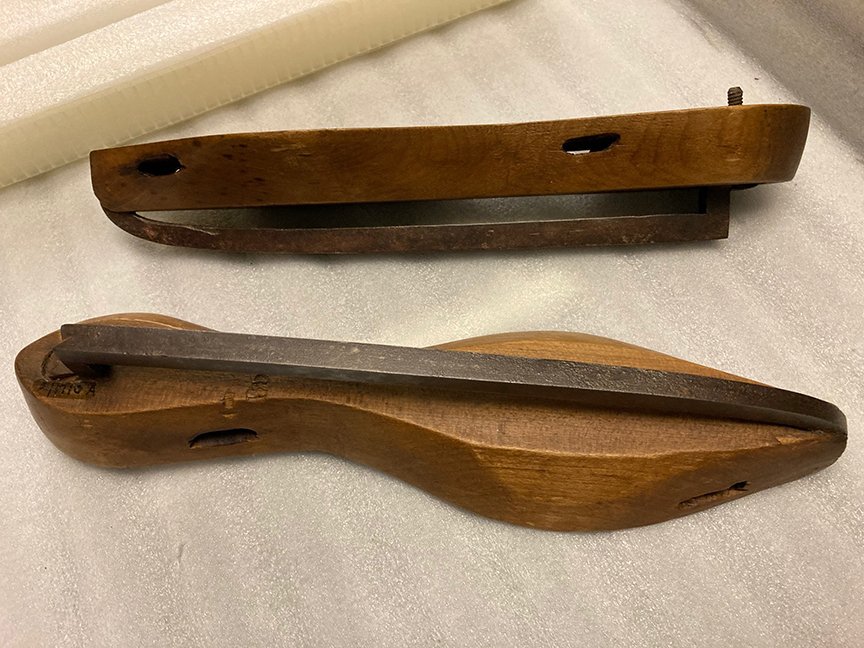Take a peek into our 14,000+ collection with our new blog series, From the Vault! Every week, we’re sharing interesting stories about one of our artefacts.
What is the provenance of this pair? When did they enter the BSM collection?
This single Korean namakshin came into the collection in 2011. They were acquired from a researcher with both academic and family connections in Korea.
Are there any features that distinguish this pair from other footwear from the same period and geographical location?
Namakshin are traditionally made out of wood and were designed to be worn in rainy weather or muddy conditions. Sometimes they were elaborately carved but this is the only painted example in our collection. An interesting detail is the painted ‘stitching’ along the ‘sole’ to make the ‘uppers’ appear sewn.
Can you elaborate more on the materials used to make this pair?
Because namakshin are wooden and look similar to European clogs, people have suggested that they entered into Korean fashion via a Dutch shipwreck in the middle of the sixteenth century. The story goes that in their efforts to survive, the Dutch castaways began making clogs for sale in Korea. Indeed, the shipwreck of the Sperwer off the coast of Korea in 1653 created interest throughout Korea about the Dutch but a detailed account written by one of the survivors, Hendrick Hamel, makes no mention of clog making despite mentions of many other money-making ventures undertaken to survive. In reality, wood has long been used by cultures around the world to make footwear and in Korea, there is some evidence to suggest that wooden namakshin date back at least as far back as the Three Kingdoms which lasted from 220 to 280 C.E.
Who would have worn this pair and where or for what occasion?
Namakshin were historically worn by both men and women. This example appears to have been made for a woman as the artist who painted it specifically referenced traditional woman’s shoes called unhye which typically feature uppers made using floral silk and visible stitching at the sole.
Why were namakshin stilted?
The stilts raised the wearer out of the mud helping to protect their garments.




